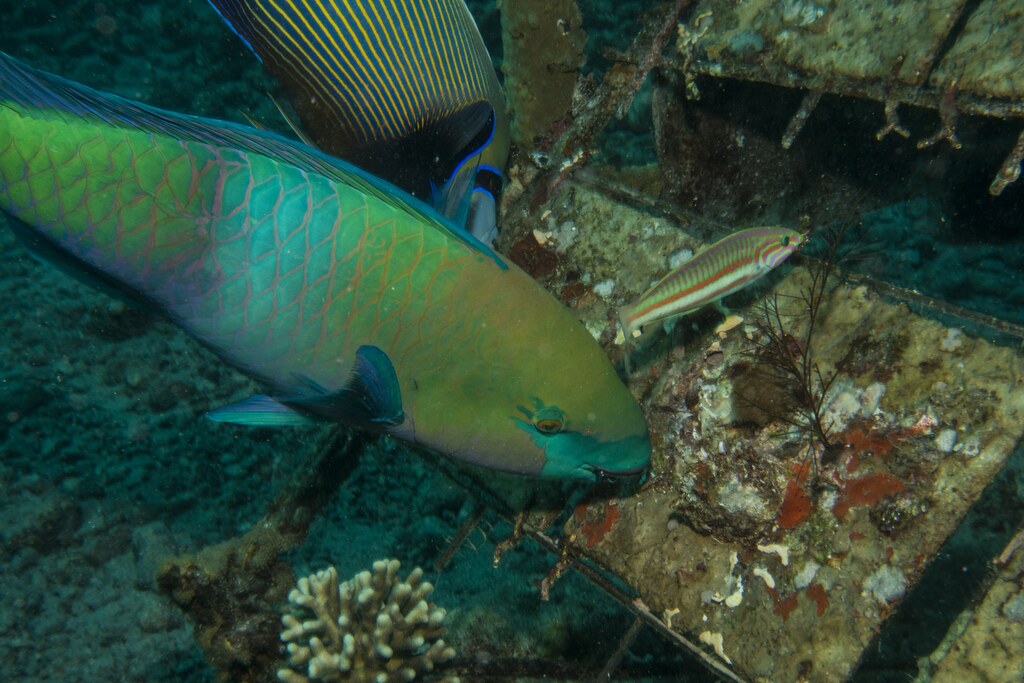Behind the science:
Upper mesophotic depths in the coral reefs of Eilat, Red Sea, offer...
2019, March 27
Posted by Veronica Radice
Fields
Community structure
Ecology
Long-term monitoring
Focusgroups
Scleractinia (Hard Corals)
Locations
Israel - Red Sea
Platforms
Rebreather
In-situ instrumentation
SCUBA (open-circuit or unspecified)
“Coral recruitment dynamics in shallow and deep mesophotic coral reefs in Eilat, Red Sea”
What was the most challenging aspect of your study (can be anything from field, lab to analysis)?
One of our greatest challenges was the construction and deployment of the settlement monitoring racks. The deployment required much assistance due to the safety challenges and conditions of technical diving. The second challenging aspect was the identification of the coral recruits on the settlement tiles based on high resolution photography. The identification of recruits was at genus level or at family level, due to the difficulty of making species-specific identifications at early stages.
What was the most memorable moment in undertaking this study?
Finishing the analysis of the last photo set (more than 4000 photos!). It was very exciting, I just sat a few moments quiet as I was grasping the fact that there were no more photos. It was exciting to start looking at the big picture of this recruitment project through the entire study time.
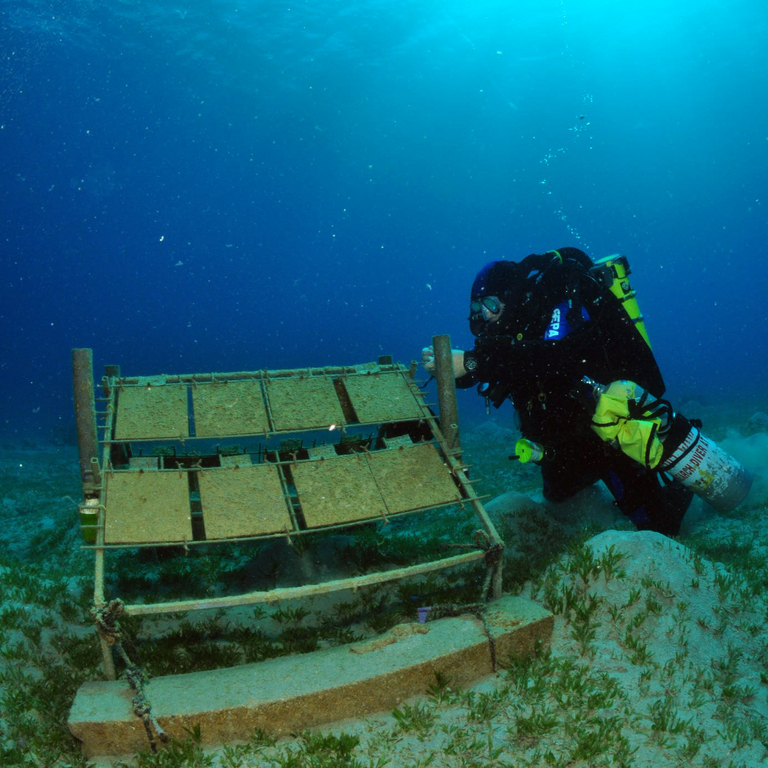 A diver conducting a census of the monitoring rack in the Gulf of Eilat.
(C) Gal Eyal
[CC BY-NC 4.0]
A diver conducting a census of the monitoring rack in the Gulf of Eilat.
(C) Gal Eyal
[CC BY-NC 4.0]
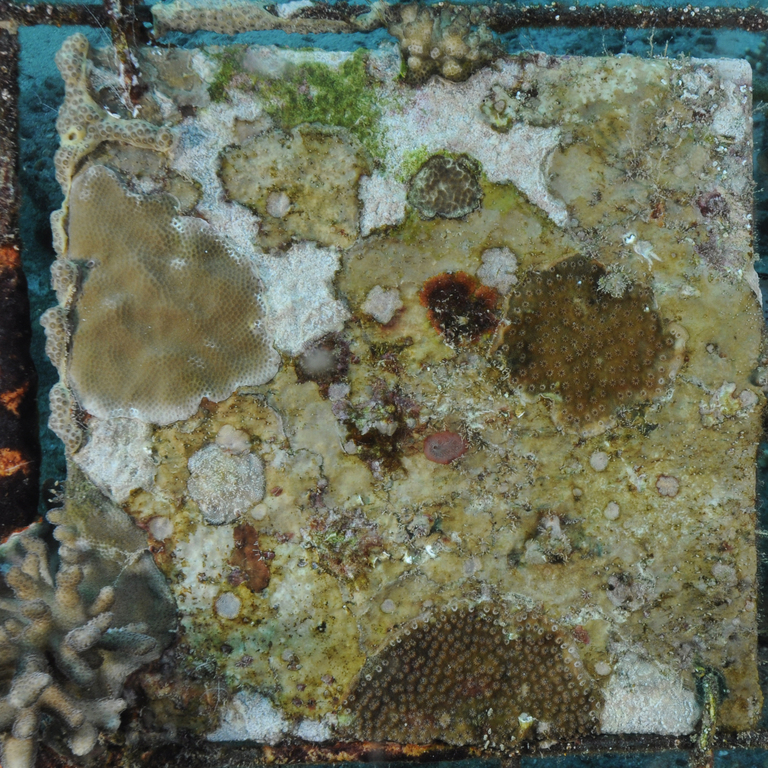 Cryptic shallow surfaces exhibiting high stony recruit coverage and bryozoans (white areas).
(C) Gal Eyal
[CC BY-NC 4.0]
Cryptic shallow surfaces exhibiting high stony recruit coverage and bryozoans (white areas).
(C) Gal Eyal
[CC BY-NC 4.0]
What was your favorite research site in this study and why?
Of the three study sites, my most favorite was the Oil Jetty. It is relatively isolated from recreational divers and from beach activities, and we had occasional visits of dolphins from the nearby Dolphin Reef.
Other than your co-authors, with whom would you like to share credit for this work?
Many have contributed to this project and supported us along the way with diving buddies, logistical assistance and advice in data analyses. Namely, logistical support from the IUI (The Interuniversity Institute for marine sciences in Eilat) staff, and other people throughout the study period: Y. Shaked, O. Ben-Shafrut, O. Hameiri, G. Zaltzman, O. Mann, Y. Lindmann, S. Oron, M. Chernicovsky, I. Shahar, N. Josef, T. Katz, S. Martinez, I. Berenstain, O. Bronstain, T. Schlesinger, H. Rapuano and O. Ben-Zvi for their assistance and advice throughout various stages of the research.
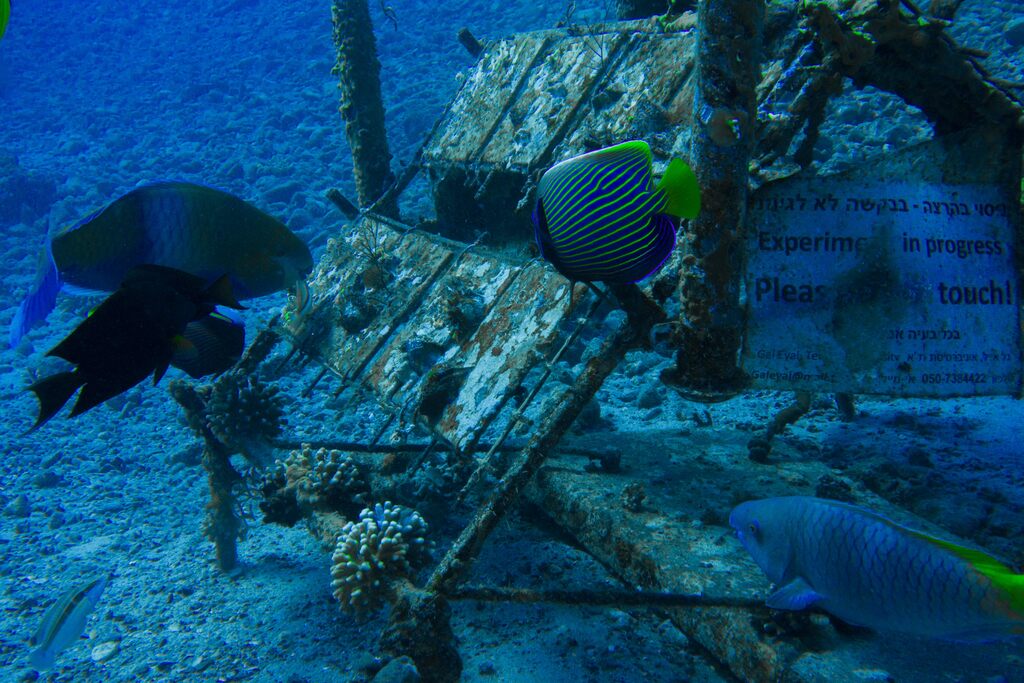 Various herbivorous fish (e.g., Pomacanthus imperator, Chlorurus sordisus and Thalassoma rueppellii) grazing on algae settled on the tiles.
(C) Netanel Kramer
[CC BY-NC 4.0]
Various herbivorous fish (e.g., Pomacanthus imperator, Chlorurus sordisus and Thalassoma rueppellii) grazing on algae settled on the tiles.
(C) Netanel Kramer
[CC BY-NC 4.0]
Any important lessons learned (through mistakes, experience or methodological advances)?
Building a coral juvenile identifier, which could save a lot of time in the future! Also, ALWAYS to make sure to back up your data (at any given time having two copies of your data), and lastly being consistent in sampling intervals on a long term study. We would love to add sometime in the future 1-2 additional settlement racks between 10 and 50 m, so we have 3-4 depth points for assessing the recruitment patterns along a depth gradient.
Can we expect any follow-up on this work?
The data achieved in this study is a treasure chest. There is much more than we can learn through the photos that were taken. Currently, we are determining the growth rates of shallow and mesophotic juveniles. Also, we translocated mesophotic racks to shallow waters, with the benthic community that grew on the tiles, and we monitor the survival of mesophotic juvenile corals in shallow waters. We encourage more long-term studies across a depth gradient from shallow to mesophotic coral reef habitats.
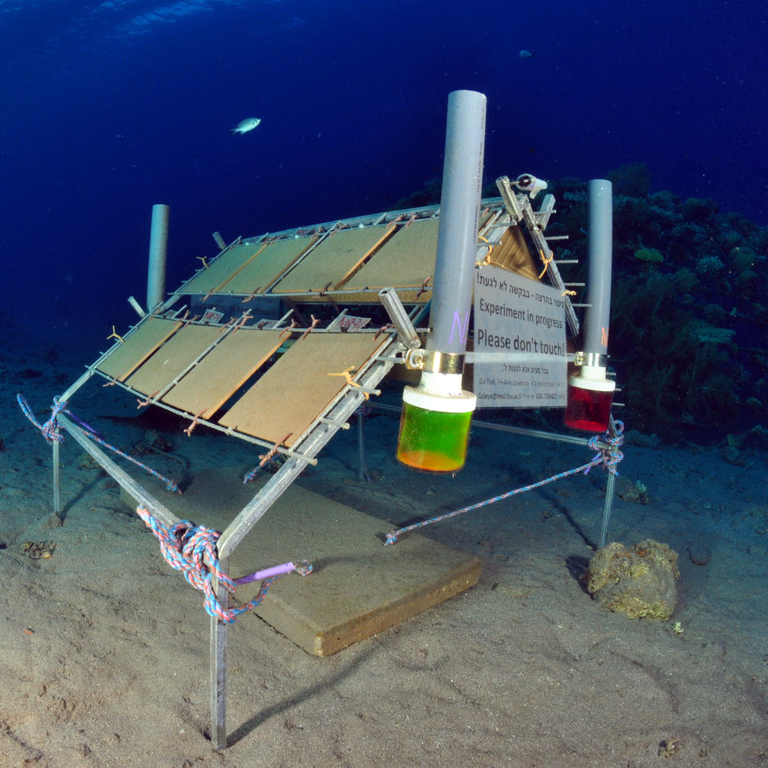 Monitoring rack model featuring 16 terracotta settlement tiles (each 20 × 20 × 1 cm) secured at a Y45° angle to the bars; eight facing east (open-sea) and eight facing west (shore).
(C) Gal Eyal
[CC BY-NC 4.0]
Monitoring rack model featuring 16 terracotta settlement tiles (each 20 × 20 × 1 cm) secured at a Y45° angle to the bars; eight facing east (open-sea) and eight facing west (shore).
(C) Gal Eyal
[CC BY-NC 4.0]
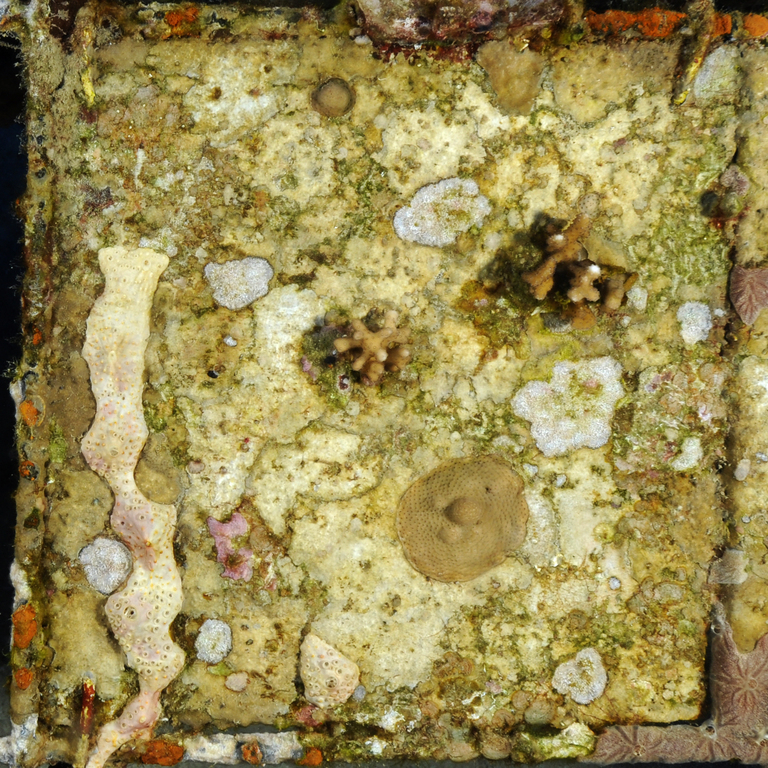 Exposed mesophotic surfaces were favored as settlement spots, with the two most common coral genera settling on the tiles (Porites spp. and Stylophora spp.), with the noticeable Sponge Botryllus eilatensis.
(C) Gal Eyal
[CC BY-NC 4.0]
Exposed mesophotic surfaces were favored as settlement spots, with the two most common coral genera settling on the tiles (Porites spp. and Stylophora spp.), with the noticeable Sponge Botryllus eilatensis.
(C) Gal Eyal
[CC BY-NC 4.0]
Featured article:
|
|
Upper mesophotic depths in the coral reefs of Eilat, Red Sea, offer suitable refuge grounds for coral settlement | article Kramer N, Eyal G, Tamir R, Loya Y (2019) Sci Rep 9:2263 |

|

